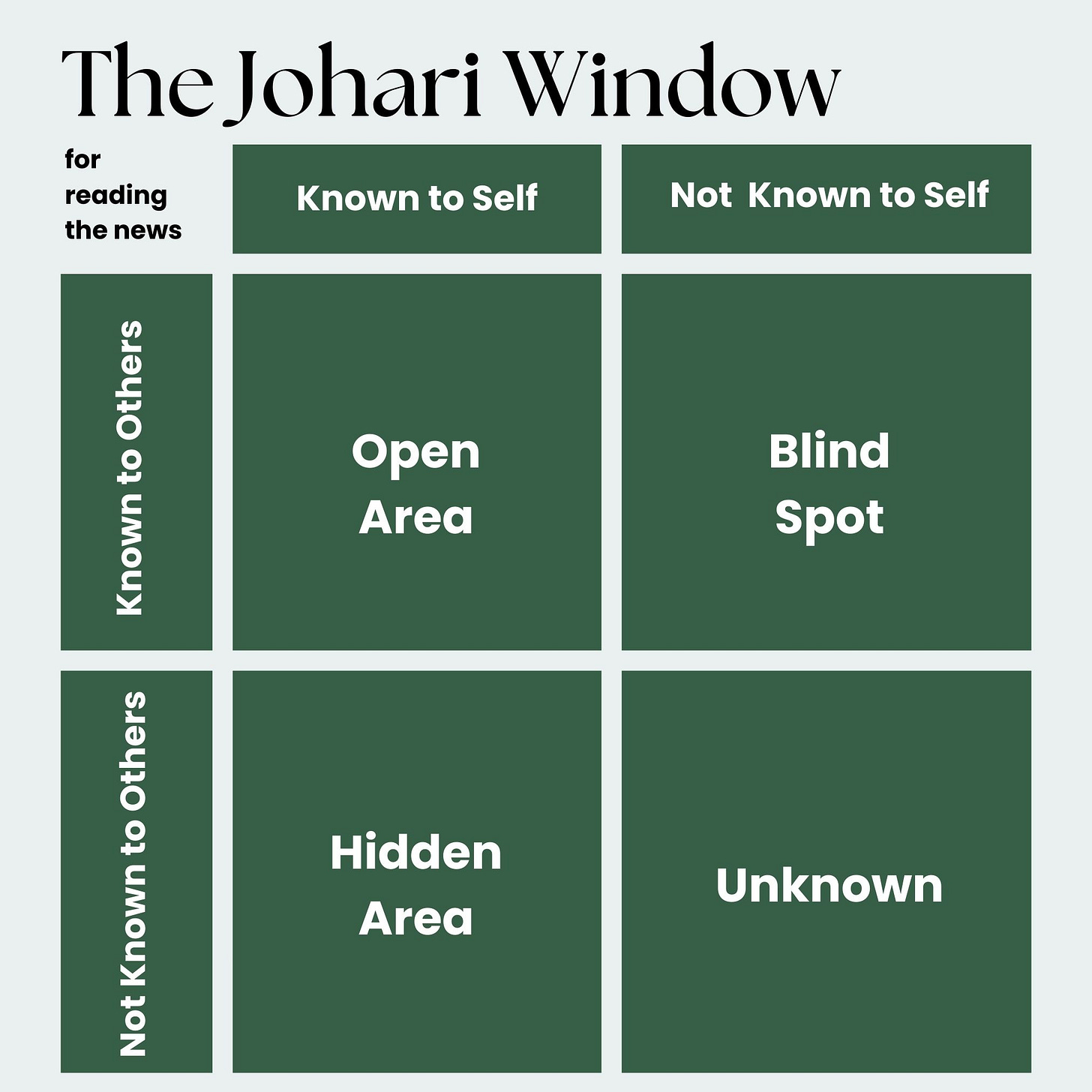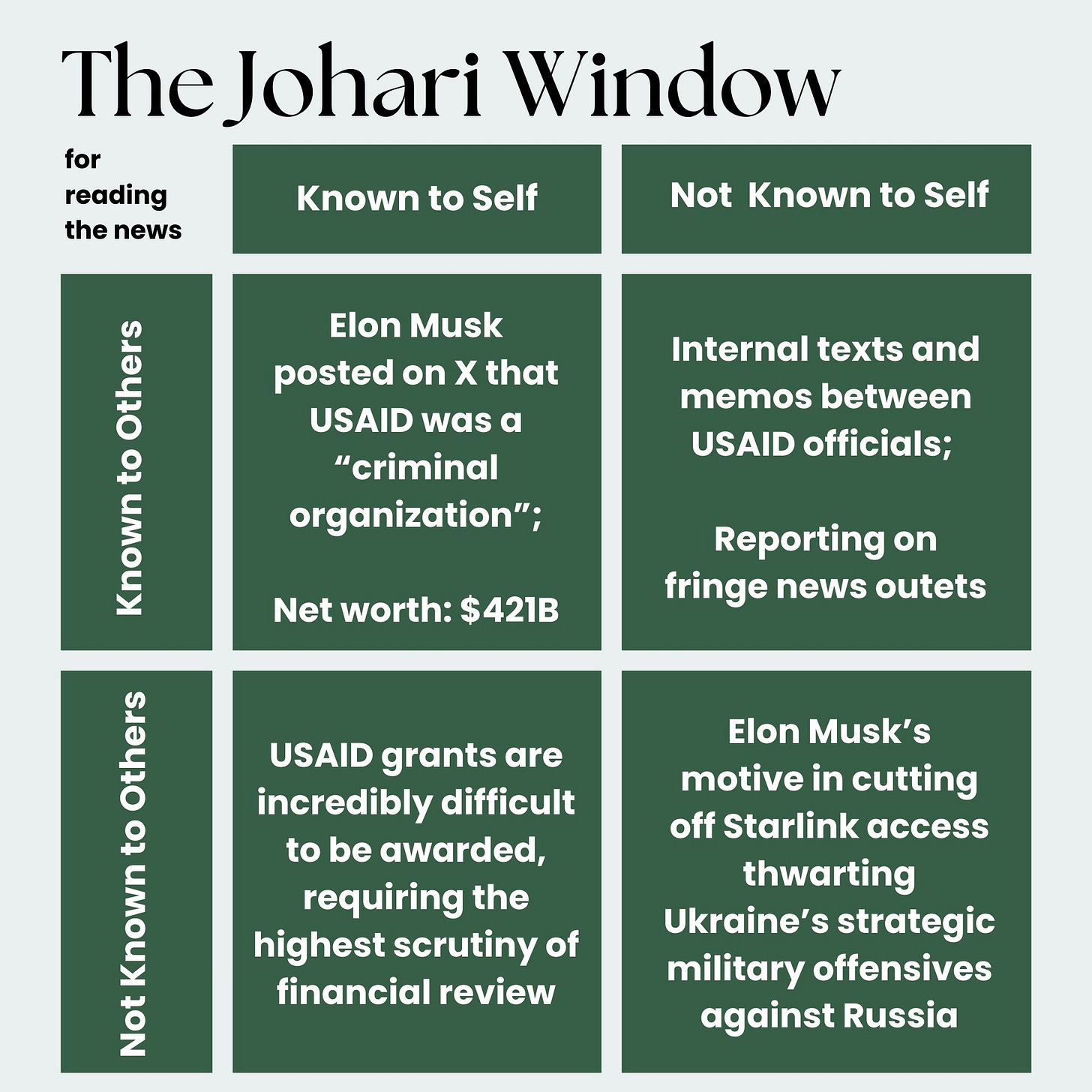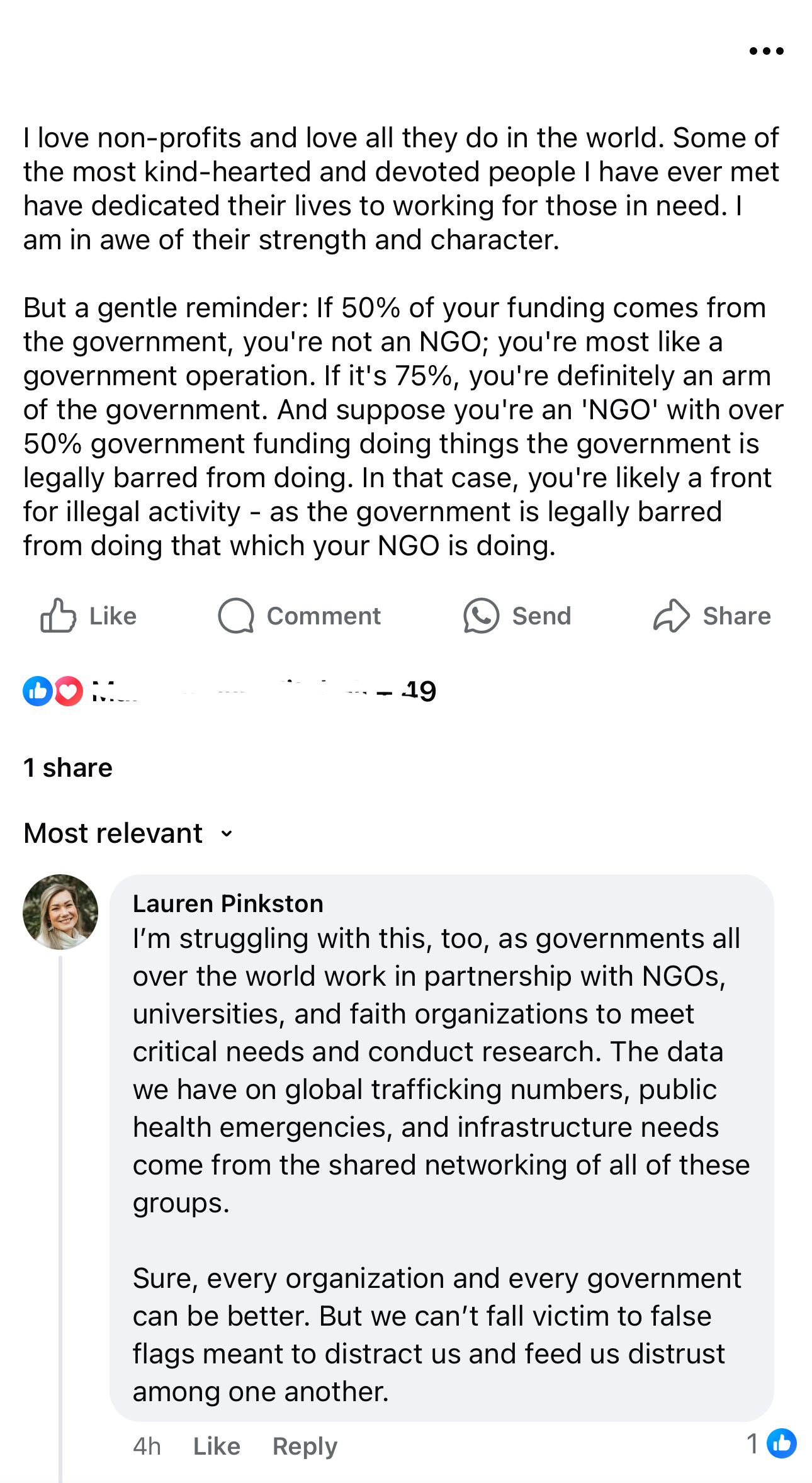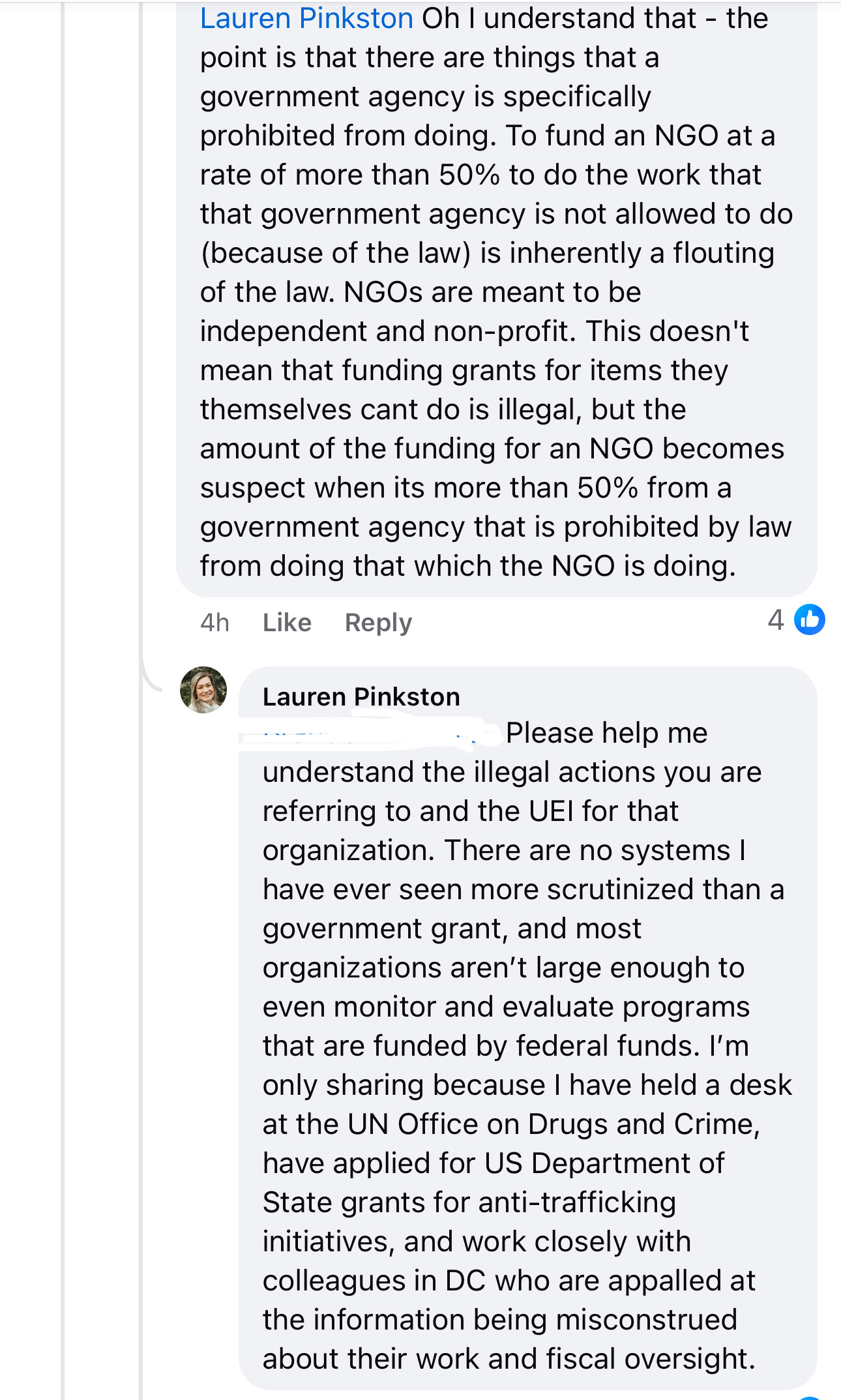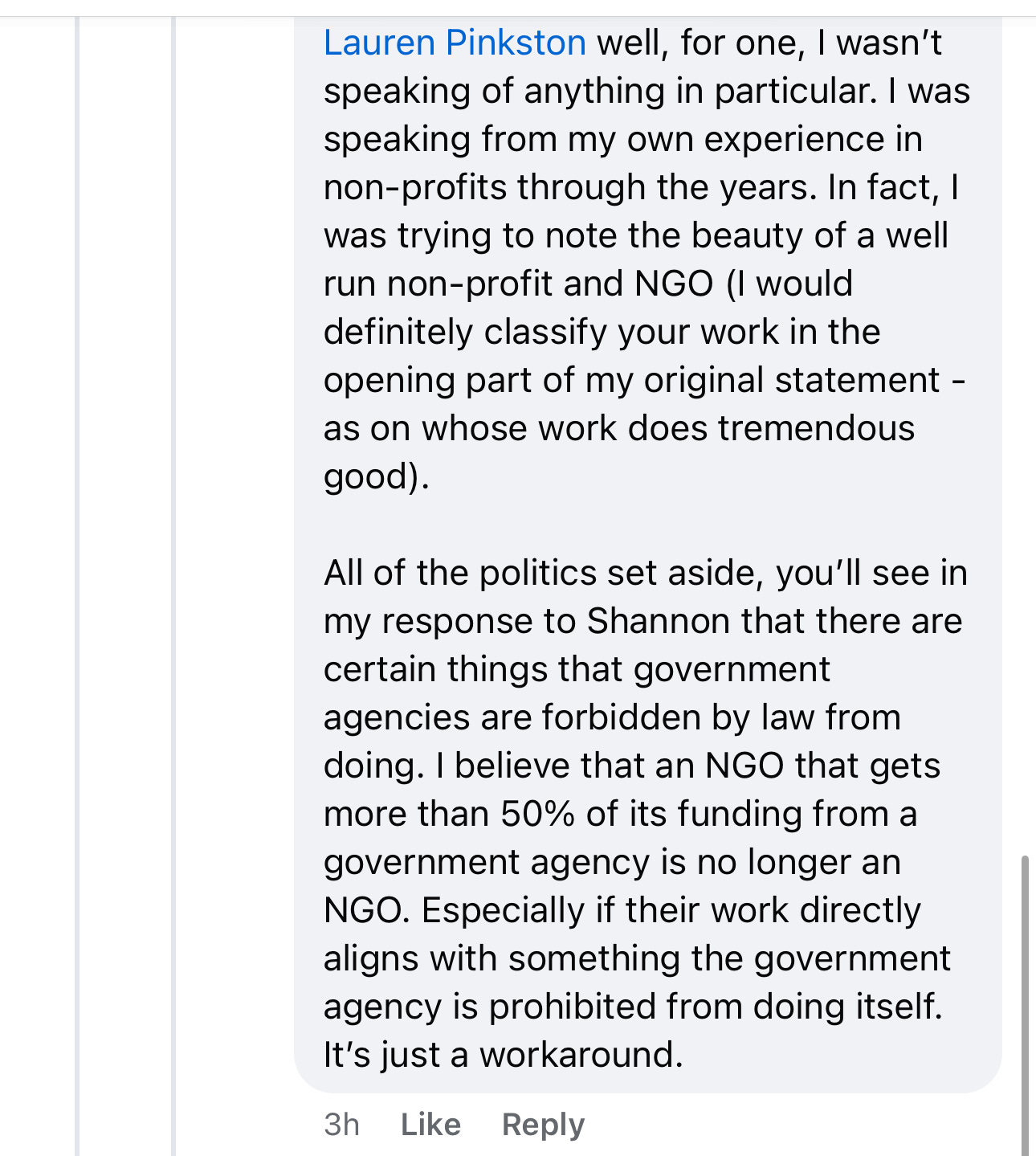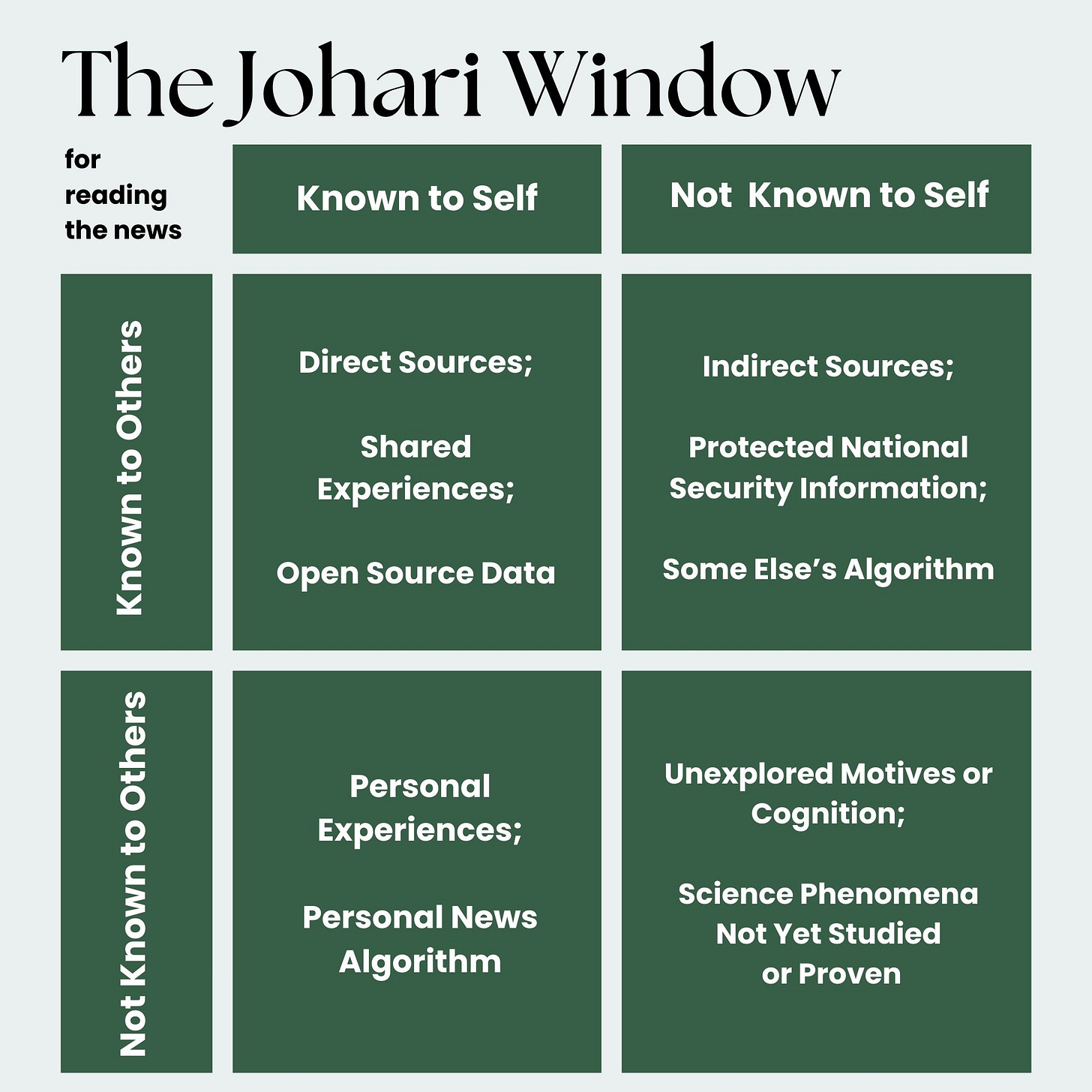When I taught a university course called “Leading and Managing People,” my classes got to dive deep into organizational psychology and the things that make people tick.
I perceived my role as an undergraduate professor with a purpose to aid in my students’ self-exploration during critical years of their formation. They weren’t quite ready to lead or manage people in a corporate setting, but they would be exponentially better at it if they knew how to communicate their needs in being led and managed by others.
I’ve worked professionally on three continents, and cultural nuance is really important to consider when conflicting communications styles or personal values meet across a table.
Some truths remain universal, however, and I’ve found a few tools that can be used in any context, no matter the topic of conversation or interpersonal challenge.
Enter: The Johari Window
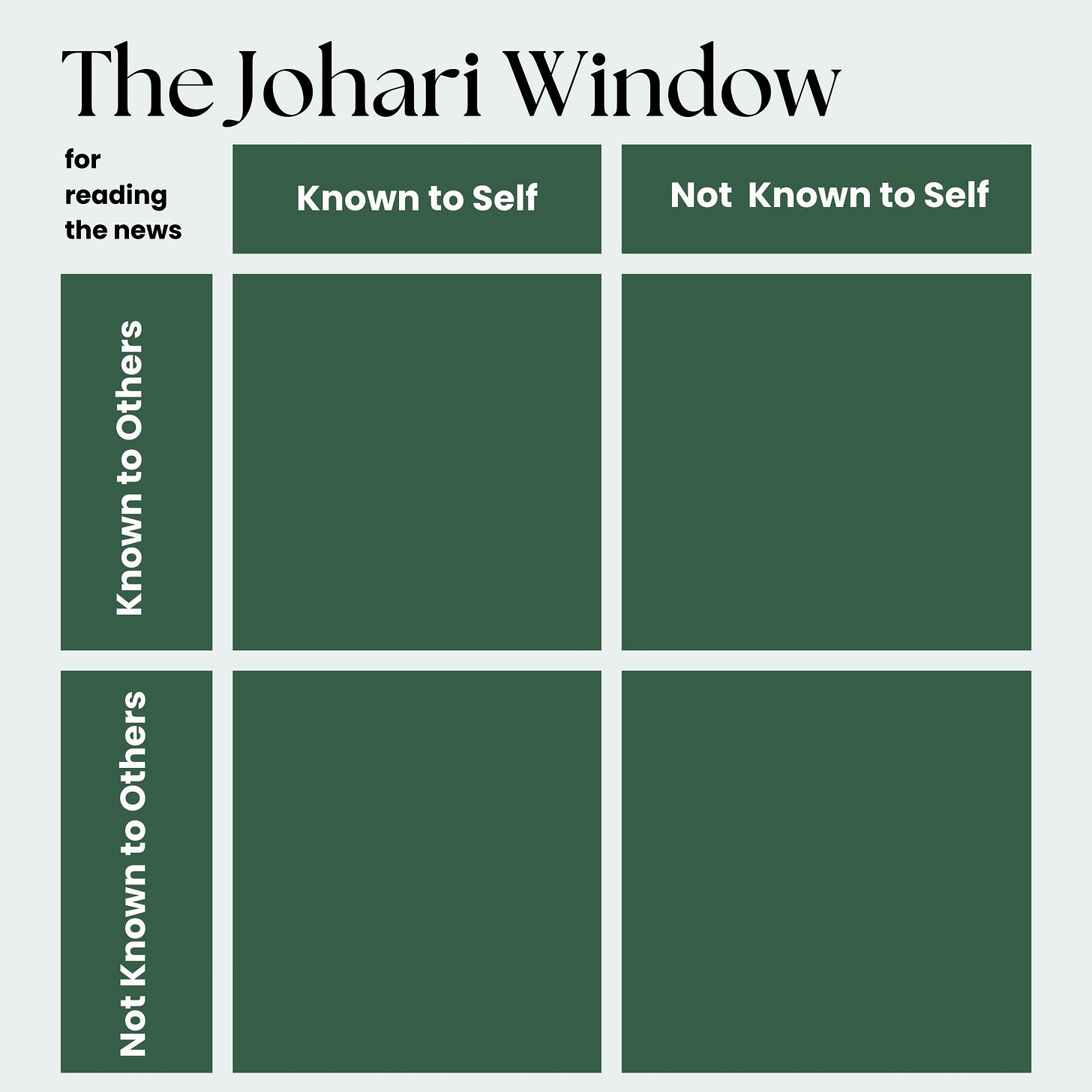
The premise of this tool suggests that humans interact over information that exists both internally and externally, sometimes known and sometimes unknown.
Conflict is most likely to occur where that information lines up with one or both parties engaging over a topic that includes information that cannot be or has not been accessed.
As you can see above (insert nerdy throat clearing cough), each quadrant of the window represents what happens where the x and y axis line up. It’s pretty self-explanatory, but here’s a quick video where I discuss what that looks like:
To explain how I use this tool to process the news and engage others in conversation around it, I pulled examples from my article on Elon Musk’s personal vendetta against USAID. You can read it here if you haven’t had time to yet. »
I plugged the part of that article into these windows and consider my own blind spots:
Before I let my fingers go wild in the comments…
I feel that I have a unique responsibility to speak up against the slander of US aid organizations right now because I have experience and perspectives that most Americans don’t have. I am engaging conversation online (even on Facebook) for friends who are in shock that our government would be freely handing out tax dollars to controversial agendas around the world, because this is overwhelmingly not true.
Just today, I saw my own U.S. Senator, who is well loved by her colleagues on the Hill, but panders to her TN voter base in dangerous ways, post this on Facebook:
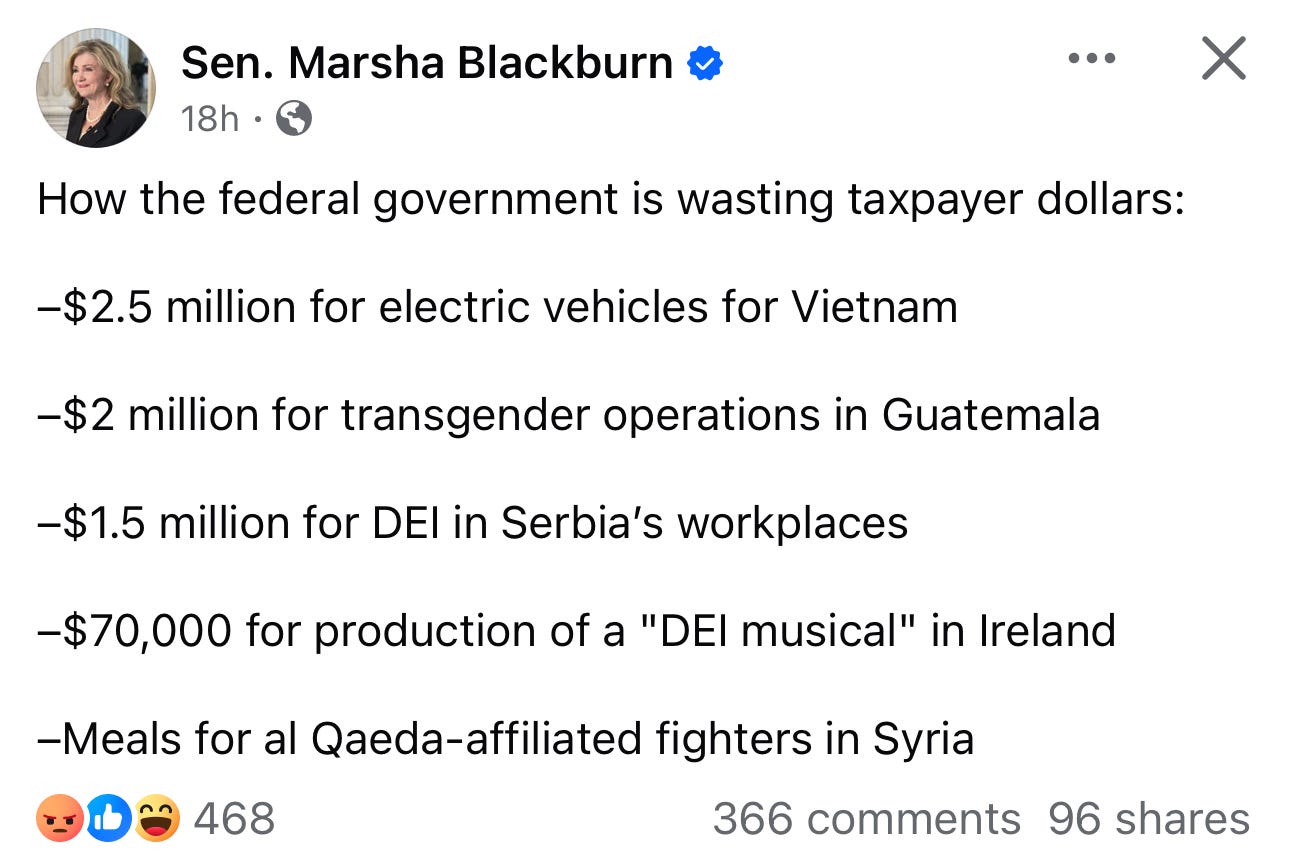
All of that to say, when I understand something different than someone else, it’s critical that I engage a conversation with patience (*they don’t know what they don’t know*) and also with curiosity, recognizing that I also don’t know what I don’t know.
If it’s helpful, I’m sharing some screenshots of a conversation I had on Facebook this morning, protecting the identity of a friend who originally posted his thoughts.
Did I win this argument? I don’t know about that. But winning wasn’t my intention.
I did, however, hold space for a broader conversation, and force the poster to become extra clear in his talking points, which I was able to receive better once I also understood what bothered him about his understanding of government funded organizations.
How can this apply to every political conversation?
I’m so glad you asked!
Again, there is a fuller conversation of this on a highlight on Instagram, but I made these graphics and wanted to offer them so that you could process them best on the medium of your choosing.
Social media is a lot right now! May you engage your heart and your mind in a way that feels authentic and safe to you, choosing your battles well and your words with wisdom.
Before I go—I did something on Friday night that was SO fun and I’d love to do it again.
It’s important that we are holding space for each other as we try to navigate the world with empathy while our empathy is directly under attack. I went live on IG and had several followers pop on to say hello and just talk about how they were working through relationships with the barrage of news. It was so beautiful!
I can’t wait to keep getting to know you brave souls.
In the power of peace,
lp



